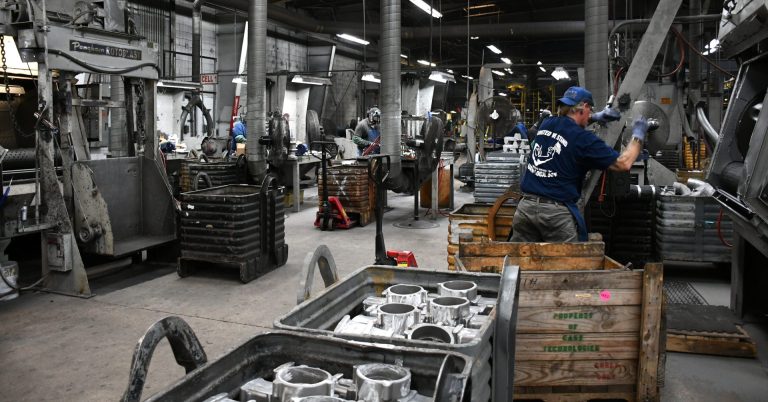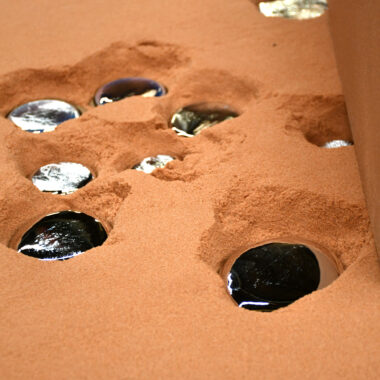Dive Into the Globe of Light Weight Aluminum Casting: Comprehending the Various Approaches
Light weight aluminum casting is a basic procedure in the manufacturing sector, with various methods used to create accurate and elaborate elements. Recognizing the various strategies utilized in light weight aluminum spreading can offer valuable understandings into the capabilities and limitations of each technique. From the conventional sand spreading technique to the advanced die casting process, each technique offers one-of-a-kind advantages relying on the demands of the project. Discovering these diverse approaches can provide a thorough sight of the opportunities within the globe of light weight aluminum spreading and exactly how each strategy contributes to shaping the contemporary production landscape.
Sand Casting Technique
Sand spreading, a widely-used approach in aluminum casting processes, includes developing mold and mildews made from compressed sand for pouring molten metal. This technique is cost-effective and extremely functional, making it a preferred option for various industries. The process begins with the development of a pattern, normally made from timber or steel, which is after that pushed right into the sand to leave an impact. The sand blend, commonly silica sand blended with a binder like clay, is tightly loaded around the pattern to create a mold and mildew tooth cavity. As soon as the mold and mildew is all set, it is safely put in a flask and molten aluminum is put into the cavity.
After the steel has cooled and strengthened, the sand mold and mildew is broken away to reveal the light weight aluminum spreading. Sand casting enables the production of complicated forms and big parts that might be pricey or tough to produce using various other techniques. It is likewise a sustainable strategy as the sand can be reused and used numerous times, decreasing waste in the casting process.
Irreversible Mold Technique

One significant advantage of the Permanent Mold Strategy is the enhanced dimensional precision it uses. The steel mold and mildew enables for tighter tolerances and finer information in the last aluminum castings compared to sand spreading approaches. This accuracy makes it a favored option for applications where tight dimensional control is important, such as in the vehicle and aerospace industries.

Pass Away Casting Refine

Investment Casting Approach
Utilizing an accuracy spreading approach, Financial investment Casting Strategy entails producing complex view website aluminum components by pouring liquified steel into a ceramic mold. This procedure, additionally recognized as lost-wax spreading, begins with the creation of a wax pattern of the wanted component. This wax pattern is then coated with a ceramic material to create a covering. Once the ceramic covering is set, it is heated up to remove the wax, leaving a hollow ceramic mold.
The following step entails pouring the liquified aluminum right into the ceramic mold. The light weight aluminum fills the dental caries left by the wax pattern, taking its shape specifically. This method is preferred for its ability to create complex forms with high precision and a smooth surface coating. Investment casting is generally utilized for making components in markets where tight resistances and intricate styles are called for, such as aerospace, automobile, and clinical tools. The adaptability and accuracy of the Investment Casting Technique make it a beneficial technique worldwide of light weight aluminum casting.
Lost Foam Casting Method
Having explored the intricate accuracy of Financial investment Casting Technique, the emphasis currently changes to the ingenious technique of Lost Foam Casting in light weight aluminum part manufacturing. Lost Foam Casting, additionally recognized as evaporative pattern casting, is a modern technique where a foam pattern of the wanted part is created and after that covered with a refractory product.
One of the main benefits of Lost Foam Casting is its ability to generate complicated shapes with detailed details, frequently in a single item without the need for added machining. This technique is also recognized for its high dimensional accuracy and smooth surface area finish. Additionally, Lost Foam Spreading is an affordable process as it lowers the need for cores and permits for the production of lightweight elements. Despite its benefits, Lost Foam Casting calls for careful control of the spreading process to make sure and prevent flaws quality parts.
Verdict
In conclusion, aluminum spreading supplies a variety of techniques such as sand spreading, irreversible mold technique, die spreading, financial investment spreading, and lost foam casting. Each technique has its very own benefits and applications, making light weight aluminum casting a functional and widely utilized process in different sectors. Recognizing the distinctions between these methods is important in choosing one of the most look here ideal spreading technique for specific production demands.
Sand spreading, a widely-used approach in aluminum casting procedures, includes developing molds made of compacted sand for pouring molten steel. aluminum casting.The Long-term Mold Strategy, like sand spreading, is one more prevalent method used in light weight aluminum spreading processes, supplying distinctive benefits in terms of mold and mildew reusability and dimensional precision. The metal mold and mildew allows for tighter tolerances and better information in the last light weight aluminum spreadings compared to sand casting methods. The two major kinds of die spreading are cool chamber pass away spreading and warm chamber die spreading, each appropriate for different kinds of light weight aluminum alloys.In final thought, aluminum spreading uses a range of approaches such wikipedia reference as sand casting, long-term mold method, die casting, financial investment casting, and shed foam casting